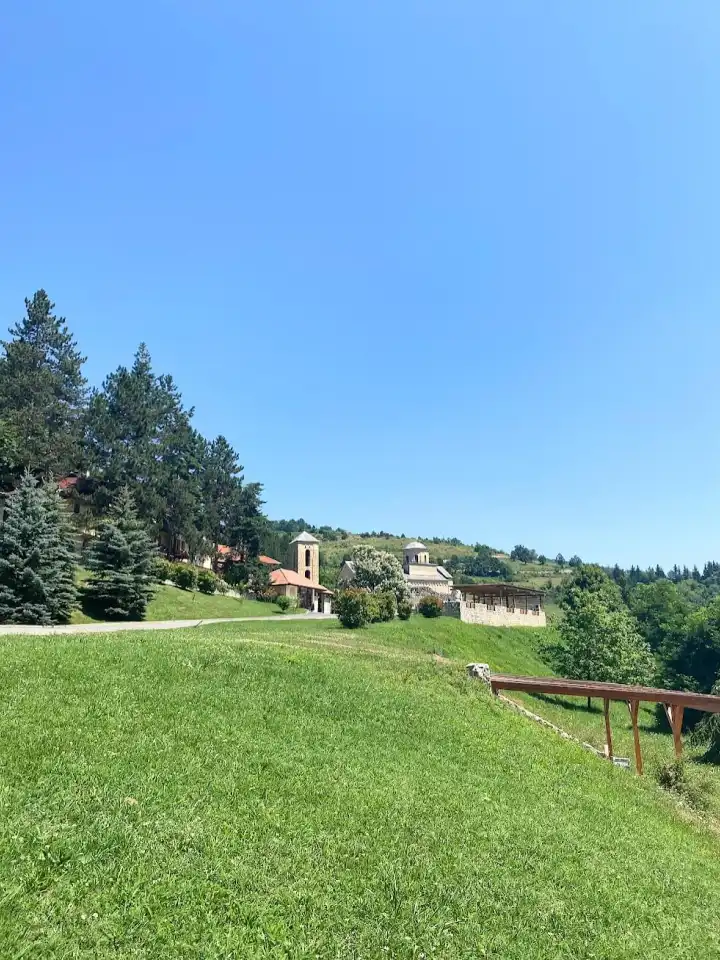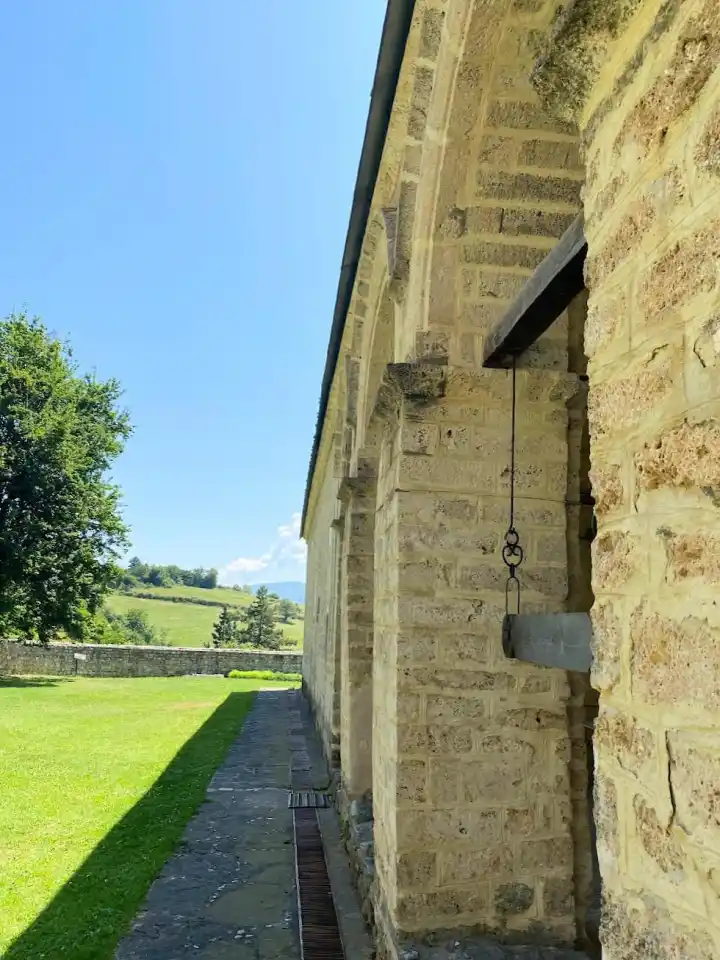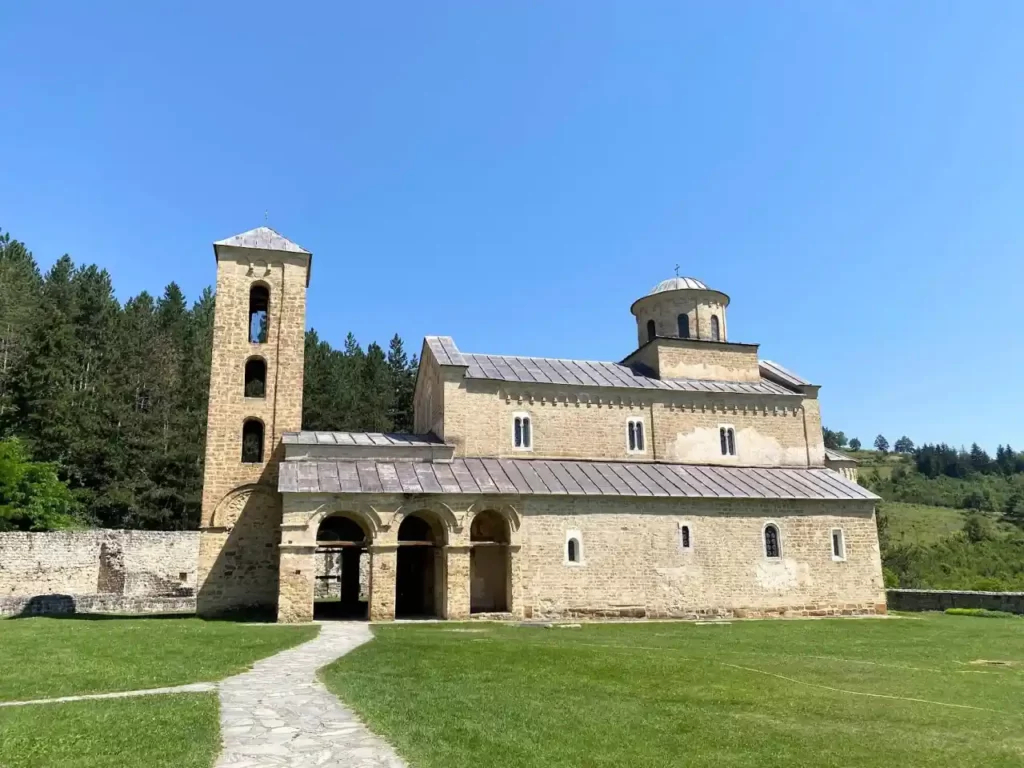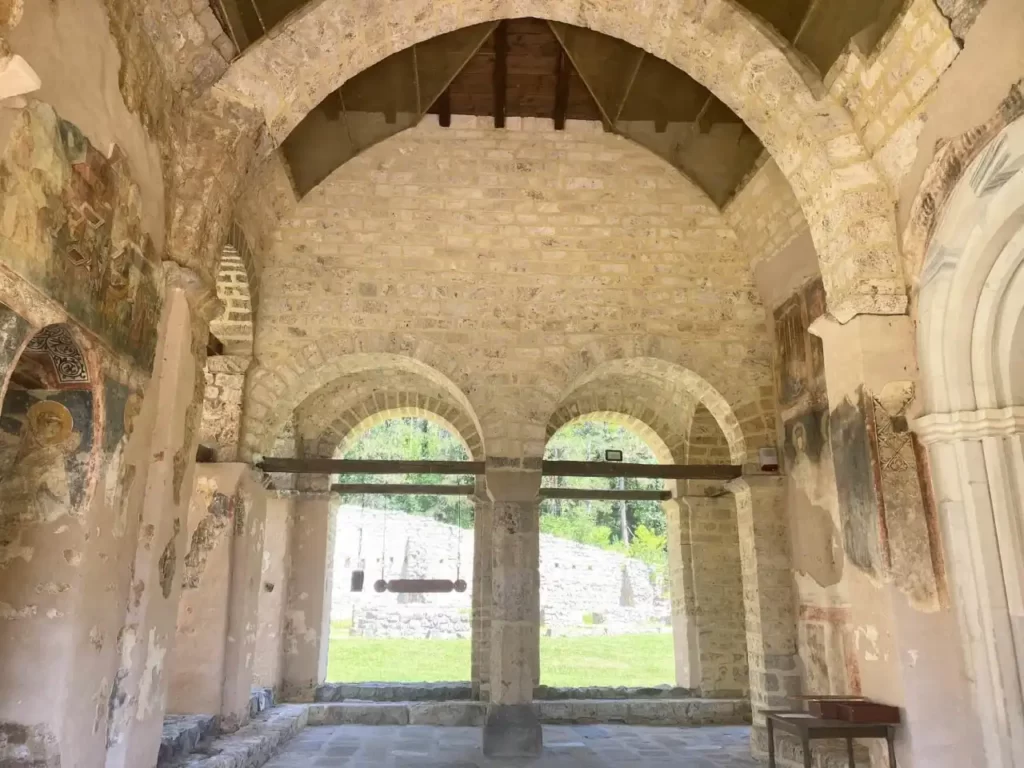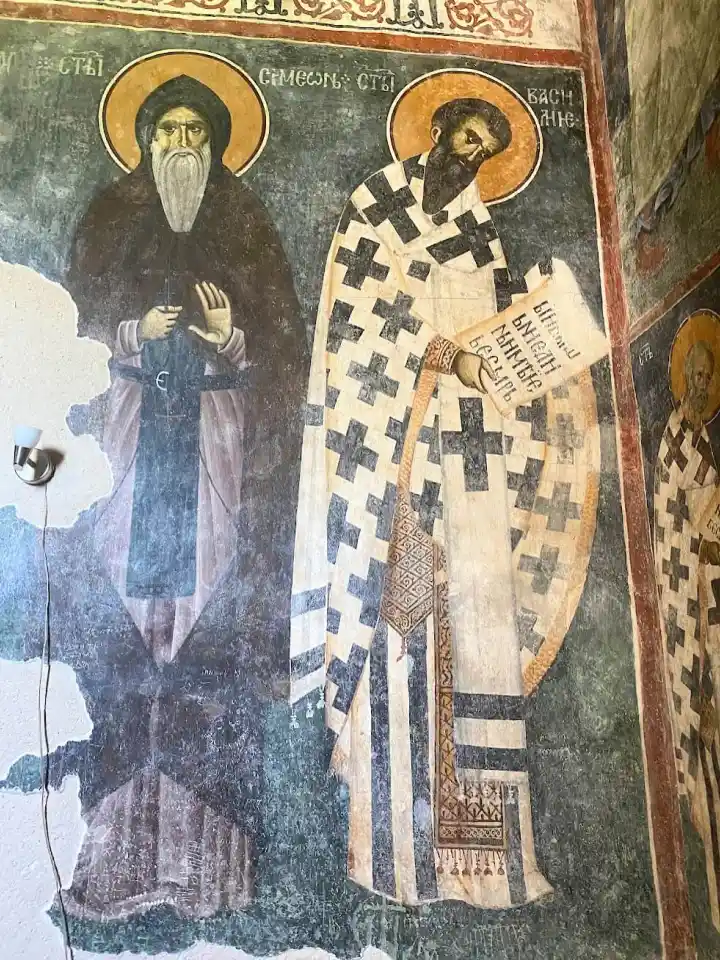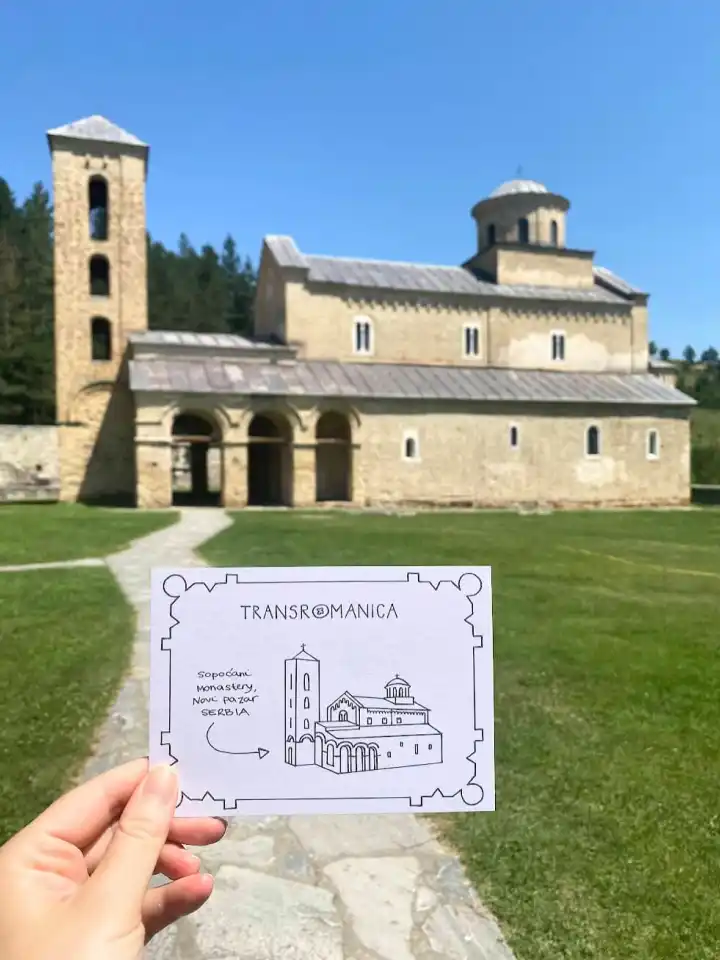Sopoćani Monastery is a beautiful place located in the green landscape of south Serbia. It’s a 13th-century monastery famous for its extraordinary frescoes. Although it had a turbulent history, it found its place on the UNESCO World Heritage list for its artistic and cultural importance. Here is the Culture Tourist guide to Sopoćani Monastery, including its history, art and tips for visiting.
Sopoćani Monastery in Serbia
Sopoćani Monastery is one of the medieval Serbian monasteries on the TRANSROMANICA route. During my visit, I visited all five TRANSROMANICA sites in Serbia. Located in beautiful nature and often isolated from the hustle of larger towns, these places make lovely locations to visit.
Watch my video about TRANSROMANICA’s sites in Serbia below:
Sopoćani Monastery in Serbia was founded by King Stefan Uroš I. He was the son of the first Serbian king from the Nemanjić dynasty, Stefan the First-Crowned. Remembered as a wise and well-educated ruler, King Stefan Uroš I was among the most important 13th-century monarchs. His mother was Anna Dandolo from Venice, and he was married to the French princess Helene d’Anjou. She founded another important medieval monastery in the region – Gradac. Art and culture flourished during his reign because of the good political and economic situation.
Sopoćani Monastery was built between 1259 and 1270, close to the Raška River source. You can still see it near the monastery’s entrance. Its founder, King Stefan Uroš I, built it as his burial church. Besides him, his mother (Anna Dandolo), father (Stefan the First-Crowned) and cousin, Grand Prince Đorđe, were buried inside it.
Like many other Serbian medieval monasteries built during the same time, both Western and Byzantine influences are visible in its design.
Sopoćani Monastery was supported and enlargened by members of the Nemanjić dynasty. It was a wealthy monastery by the end of the 14th century, when it slowly declined. The monks had to leave it several times during the 16th century because of the Ottoman threat. In 1689, the Ottoman Turks set the monastery on fire, dismantled the church’s roof and severely damaged its building. After that, monks left the monastery for nearly 200 years, only returning in the 20th century.
The first works on repairing the church started in the 1920s. After the Second World War, fresco paintings were restored. However, in 1975, more complex research and restoration works began, which are still in progress. Because of its artistic and cultural value, Sopoćani Monastery was listed as a UNESCO World Heritage Site in 1979.
⤷ Read more: Exploring the medieval monasteries in Serbia
Sopoćani Monastery architecture
Sopoćani Monastery was a large complex in the past. Surrounded by protective walls, it comprised the main church and several buildings, like the living quarters, kitchen, refectory, and other edifices. It was demolished and rebuilt several times, but its design remained similar. Only the Church of the Holy Trinity and parts of the surrounding walls can be seen today. The rest of it is in the archaeological state of preservation.
With its architecture, the Sopoćani Monastery Church of the Holy Trinity stands out among other TRANSROMANICA sites I visited in Serbia. Like other Serbian Monasteries built after the 12th century, it follows the Žiča Monastery model.
However, its exterior shows a strong Western influence and the church looks like a typical Romanesque basilica from the outside. Elements of Romanesque architecture are visible in its basilica-like shape, friezes of blind arcades and pilaster strips on a facade and a dome drum. Its side walls have two-light windows.
The outer narthex with a bell tower is also quite unique among the Serbian church architecture of that time. Although the construction’s exact time is unknown, it was probably at the end of the 13th century.
Sopoćani Monastery frescoes
The most important part of the Sopoćani Monastery church of the Holy Trinity is its fantastic frescoes. Although the church’s interior shows Romanesque Western influences, its interior is home to some of the best 13th-century Byzantine frescoes in Europe.
The frescoes were mainly created between 1263 and 1270. They show a Classical style characterised by the calmness and divinity of their subjects. The classical influence isn’t only visible in the monumental appearance of the characters, but also in the use of architecture in the background of some scenes. Classical Antiquity architecture includes decorative reliefs and Corinthian capitals on marble columns of porticos.
The Sopoćani Monastery frescoes quickly became so famous and renowned that they were often copied during the 14th century. That led to the creation of the Sopoćani style, which influenced many other church wall paintings.
The leading painter of the Sopoćani Monastery was one of the most talented artists of his time in Serbia. He was a great colourist often using numerous shades of the same colour. So, for example, we can see eight different tones of violet in these frescoes. Although we can’t see it so well today, the background of the most prominent compositions was covered with gold leaves.
It was believed that material beauty could be used to get closer to God during that time. That’s absolutely visible in the Sopoćani Monastery wall paintings. The characters such as apostles, martyrs and saints have beautiful, almost divine appearances, indicating their allure is out of this world.
The Dormition of Mother of God is the most renowned fresco at Sopoćani Monastery. With its gracious compositions and monumental figures, it’s an example of the transition of the Byzantine art periods from Komnenian to Palaiologan.
⤷ Read more: Studenica Monastery in Serbia
Tips for visiting Sopoćani Monastery
⤷ How to get to Sopoćani Monastery – The best way to visit Sopoćani Monastery is by car. I flew to Belgrade, rented a car there and visited all five medieval monasteries on the TRANSROMANICA route that way. Sopoćani Monastery is located around 15 kilometres (9 miles) west of Novi Pazar, and you can take a local road from there. My tip is to use Google Maps because it’s more reliable than the GPS navigation built into a car.
⤷ What to wear in medieval monasteries in Serbia – All the medieval monasteries on the TRANSROMANICA route in Serbia are in use, so you should dress appropriately when visiting them. Short sleeves and anything up to your knees is fine. You don’t need to cover your head when entering the monasteries.
⤷ Restaurant recommendation near Sopoćani Monastery – After visiting the Sopoćani Monastery, I had lunch at the Turističko naselje Ras restaurant. Located next to Raška River, it’s situated in a beautiful setting of the surrounding mountains. They offer traditional food and local beverages. It’s a great place to have lunch when visiting the Sopoćani Monastery.
⤷ Paying in Serbia – The official currency in Serbia is the Serbian Dinar. One euro is around 117 dinars, and one US dollar is about 106 dinars. I used the Revolut card to withdraw money at the ATM, pay for tools, and pay at gas stations and restaurants. In smaller cafes and markets, I paid with cash.
⤷ For more information: For more information about visiting the Studenica Monastery, read the TRANSROMANICA page dedicated to it. You can find helpful info about the Serbian medieval monasteries on the Serbian Tourism Board and the official Studenica Monastery websites.
I visited Sopoćani Monastery and other TRANSROMANICA sites in Serbia during the press trip organised by them and their partners from the Serbian Tourism Board. Many thanks to them for organising this trip for me. As always, all opinions are my own.


